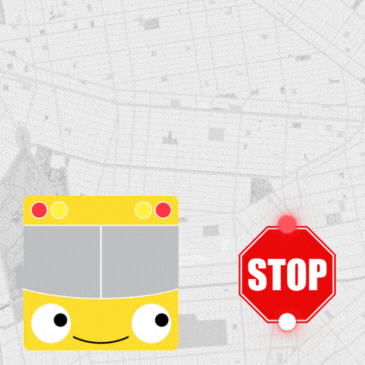
Jews in Sports: DRAWING THE LINE
The difference between ice-hockey athletes of today and those of yore, in a word, is helmets.
In the 1970’s, fans would be hankered to find an NHL player wearing a skullcap on the ice, especially if said player was not injured.
Call it toughness, stupidity, lack of knowledge or anything else you may like, professionals of yesteryear were a different breed than those of today.
One such change that has occurred over the years has been the league’s desire to curb injuries, specifically those of the head nature. This “Witch-hunt” to eradicate head-shots and concussions came to the fore last season when the NHL’s poster boy, Sidney Crosby, was concussed in the first week of January, ending his season and, at the time, placing his career in jeopardy.
More recent has been the issue of players who repeatedly take licks to their cranium and the link it has to degenerative brain disease. There was Bob Probert, a former Chicago Blackhawks and Detroit Red Wings enforcer, who died suddenly at age 45 of a heart-attack, but was found later on to have developed early stages of mental illness.
Then this past summer came along.
After one of the NHL’s most successful seasons on record, the very untimely deaths of Derek Boogaard, 28, New York Rangers, Rick Rypien, 27, Winnipeg Jets and Wade Balek, 35, recently retired from the Nashville Predators, brought the issue of injuries and fighting back into the spotlight.
Boogaard, known throughout the league as the NHL’s “toughest” tough-guy, was a gentle-giant off the ice and, I can vouch personally, he was a kind and caring individual to boot. However, he – like Rypien and Balek – had their off-ice issues too. Derek’s accidental death – a mixture of alcohol and pain killers – served as a wake-up call to the NHL that its fighters turn to substance to ease the pain and anxiety they face on and off the ice on a daily basis.
Rypien, fair or not, will likely be remembered by the public for his scuffle with a fan after Rick was sent off from a game due to a fight with an opposing player. His suicide only further opened up Pandora’s Box for the NHL in dealing with this issue.
Balek, known as a solid tough-guy throughout his 14-year career, took his own life last week. Although it’s too early to know what the details were surrounding his demise, “it doesn’t take a genius to figure out what some of the problems were.
What the NHL needs to do is grab control of this issue before it turns into an epidemic. It happened with head-shots already, where too little was done before it became too late, and only now is the league learning what some of the true consequences for turning a blind eye have been. It should not wait any longer for the summer occurrences to further deepen and spread down the road.
Former NHL winger, Brad May, not known for his fighting prowess, but, nonetheless could hold his own when need be, penned an article last week about his experience leading up to a fight, when you, as the player, understand that the only way out is through the lion’s den.
“My mood was affected,” recalled May of the days leading up to his October 2007 fight with Boogaard. “I was really short with everyone; irritable and frustrated. But I still had to live my life, practice and pick up my kids from school. But at the end of the day, everyone knew I was uncomfortable.”
The events surrounding May’s tangle with the biggest NHL heavyweight caused for May to wait and stew nearly four months until he squared off against Boogaard. “It was like going to the slaughter,” explained May.
This is just one person’s account of what goes on behind the scenes and off the ice leading up to a fight. Furthermore, this came from a player who didn’t fight regularly. Can you imagine what it’s like to be in the shoes of someone whose job is going toe-to-toe with the baddest of the opposition on a nightly basis? What sort of anxiety does he feel? Players – even fighters – are human at the end of the day and they, too, need help to sort themselves out mentally so they can still be good fathers, husbands and friends to those they hold dear.
Hockey will not be hockey if fighting is removed in its entirety. I’m not one who professes to enjoy every fight there is in the ice sport. However, I do recognize it as a necessary evil which keeps the game and the clubs on an even keel. Were a team to have one of its star player’s hit by an opponent in a questionable manner, the “hitter” would face-off against the team’s “tough-guy” on his next shift, duke it out and be rid of the bad-blood; game continues.
Were this element of the sport to be taken away, there would be an excessive increase to borderline and illegal hits as there would be no players “policing” the game. Remember, what the referee doesn’t see, never happened.
On top of that, removing fighting from the NHL would prove costlier long-term. There are 75 or so players who rely on paychecks as fighters. Remove that and depression will course through their very being as they will suddenly have to redefine their roles on their respective teams in capacities other than fighting.
Could the deaths of Boogaard, Rypien and Balek be linked to their roles as NHL enforcers? Possibly. Concussions may have had something to do with it or perhaps the pressure of finding a new career after hockey pushed them over the edge.
Or, perhaps, it was just the plague and torment of depression, plain and simple, that took these men at a premature age. But, former player Mathieu Schneider is spot on when he says that linking suicide to being an enforcer is “far too early to reach such preachy conclusions.”
Although it’s impossible to know why exactly someone takes his own life, nor is there any way to establish conclusively that fighting, in this case, played a role in these recent hockey deaths, one thing we can all agree on is there may have been deep, personal issues that scourged these young men away from the arena of play and tugged at their essence to the unfortunate degree and path it led them down.
If the NHL was true to their word of wanting to improve the ice-game, the step forward that’s needed is to make sure all players get attended to by and see a psychologist or another professional who can help them help themselves on, but even more so, off the ice, especially when facing a daunting task such as fighting.
Indeed enforcers are appreciated by their teammates and fans for protecting their teammates, but if Commissioner Gary Bettman and his wing-men allow these recent events to slip by the wayside, they would be causing the NHL to commit its own suicide.













!!!!!!!!!!!!!!
GO PITTSBURGH PENGUINS
Sports fan, but not hockey
So what’s Jewish about this article? Are any of the players mentioned Jewish?
Even if they are, how does it relate to the story? Hockey is a violent sport. The more violent you are as a player, the more you are celebrated, but all this has nothing to do with any coincidental discovery that maybe one of these players is Jewish.
Name correction
His name is Wade Belak; not Balek.
In The Know
Schneider is Jewish!
me
Say there was no fighting allowed in hockey and you are a Jewish player and an opponent berates you for being Jewish, how would you go about settling the score on the ice (which is likely the location of contact)?
Prime example is during the 1967-68 season.
Philadelphia Flyers defenseman Larry Zeidel – whose grandparents were cremated in a Nazi concentration camp – was taunted on the ice by Boston Bruins star center Phil Esposito who reportedly said “you’re next for the gas chambers, Zeidel!”
No fighting, no method of standing up for yourself and what you believe in!
I don’t argue to ban fighting only there should be a methods in where players’ anxiety doesn’t carry over to their off-ice lives.
Sports fan, but not hockey
To #5:
So you think violence should be allowed in sports whenever a player taunts another with religious or racial slurs?
You obviously never played sports in college or professional.
Maybe you should read about how Hank Greenberg or Jackie Robinson handled it.
How would you deal with antisemitic taunts on your job or in a public setting? You would become violent? That would end you up in jail, or the one who insulted you might be bigger and stronger and hurt you worse, or he might have a gun or knife, so don’t be so sure about using violence because somebody said a nasty word to you.
to sports fan
You do make a good point, albeit a bit strayed. Indeed it is true I have not played college or professional sport, but I do know the limitations of on-field officials.
I make no bones about keeping your hands to yourself in the office and among fellow man. I only support this instance of fighting because it ALREADY is LEGAL.
It has been legal since ice hockey’s inception and has always been the middle-ground for players to unshackle their discord with one another when things were verbalized that went by the wayside of officials or hits were laced onto opponents that the opponents thought were borderline or illegal (again, missed by the officiating crew).
This has always allowed a method for anger and frustration to be vented in a controlled environment. The referee’s, in case you haven’t watched a hockey game in a while, stand on the side and observe the players who fight, all the while waiting for one of the players to falter or tire and then step in to stop the tussle.
Would you rather have this method in sports, where the two players who’s only resolution is by facing off against each other in a controlled environment, or all-out brawls as is found in other sports, such as baseball and football, where the punishment for transgressions can be meted out in overblown proportions when the boil come to a full tilt.